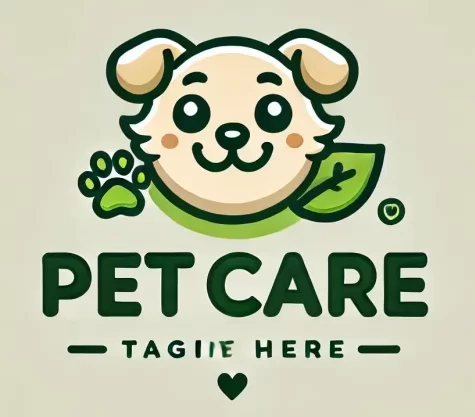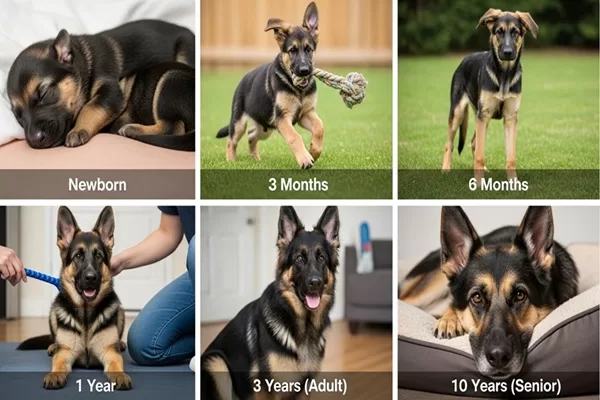If you’re raising a German Shepherd puppy or thinking about bringing one home you’re in for one of the most rewarding experiences of your life. These dogs aren’t just loyal and intelligent; they grow into strong, majestic companions who are eager to work, play, and protect.
At Kaiser German Shepherds, we’ve helped countless families navigate the journey from floppy-eared pups to confident adult dogs. And one of the most common questions we get is: “What should I expect as my German Shepherd grows?”
This guide breaks down the 7 key growth stages of a German Shepherd puppy, filled with tips on training, feeding, exercise, and how to support your dog’s development at each phase.
Why It’s Important to Understand Your German Shepherd’s Growth Stages
German Shepherds grow fast but their development isn’t just physical. Each stage brings new mental and emotional changes too. Knowing what to expect can help you:
- Provide the right nutrition at the right time
- Start age-appropriate training
- Avoid behavior issues
- Prevent joint or bone problems during growth spurts
Let’s dive into the stages so you can raise your GSD (German Shepherd Dog) with confidence.
1. The Neonatal Stage (0–2 Weeks)
Your puppy’s entire world is mom.
At birth, German Shepherd puppies are blind, deaf, and completely dependent on their mother. They can’t regulate their body temperature or even go to the bathroom on their own. Their time is spent nursing and sleeping.
What’s happening:
- Eyes and ears are sealed shut
- They navigate using smell and touch
- Rapid weight gain is normal and essential
Your role:
If you’re getting your pup from a breeder like us at Kaiser German Shepherds, this is all handled with care. Breeders monitor weight gain, ensure warmth, and support the mother dog around the clock.
2. The Transitional Stage (2–3 Weeks)
Tiny eyes open. Wobbly legs move. It’s the start of curiosity.
This is a magical stage where your puppy begins to respond to the world. Eyes open (usually around day 14), followed by their ears. They may even take a few awkward steps.
What’s happening:
- Sense of sight and hearing begins
- Puppies start exploring a few steps at a time
- First signs of play appear
Your role (as a breeder or early caretaker):
- Begin gentle handling to promote comfort with humans
- Introduce safe sounds and soft toys
- Watch for developmental milestones
3. The Socialization Stage (3–12 Weeks)
Critical for shaping personality, trust, and lifelong behavior.
This is arguably the most important developmental window. From weeks 3 to 7, puppies are still with their mother and littermates, learning bite inhibition, canine manners, and social cues.
At Kaiser German Shepherds:
We use this stage to gently expose pups to new sights, sounds, textures, people, and other animals so they’re confident and adaptable when they go to their forever homes around 8 weeks old.
What you should do (once you bring your pup home):
- Continue socialization with new people, dogs, and environments
- Start basic training (sit, come, potty cues)
- Begin crate training and leash exposure
- Use only positive reinforcement
Pro tip: This is the sweet spot for setting a strong foundation. Puppies are like sponges what they experience now shapes how they respond to the world as adults.
4. The Juvenile Stage (3–6 Months)
Your puppy becomes more independent and a little mischievous.
Once you bring your puppy home, growth takes off. Their personality blossoms, and they start testing limits, much like a toddler.
What’s happening:
- Baby teeth begin to fall out (expect chewing!)
- Energy levels soar
- They’ll start forming stronger bonds with you
How to support them:
- Keep training sessions short, positive, and consistent
- Use chew toys to help with teething
- Encourage calm behavior through mental stimulation
- Sign up for puppy classes to guide social development
Watch out for:
Jumping, barking, and early signs of guarding behavior. Address these early with gentle correction and redirection.
Also Read : German Shepherd Puppy Socialization: US Checklist & Best Tips
5. The Adolescent Stage (6–12 Months)
Think of this as your German Shepherd’s teenage phase.
Your puppy may look like an adult, but they’re still figuring things out and sometimes pushing boundaries. This stage is often when training challenges pop up, especially if structure isn’t maintained.
What to expect:
- More independence and stubbornness
- Sexual maturity begins (talk to your vet about spaying/neutering)
- Energy levels peak
- Some fear periods may return temporarily
Tips for success:
- Double down on consistent training
- Give your GSD jobs like nose work, puzzle toys, or structured walks
- Reinforce calm behavior around new people and environments
- Provide 60–90 minutes of daily exercise (divided into walks, play, and training)
6. The Young Adult Stage (12–24 Months)
Your pup is now a confident, powerful dog but still maturing.
Your German Shepherd will likely reach full height by their first birthday, but they’re far from done. Bones, muscles, and behavior continue to develop for another year or more.
What’s still changing:
- Males fill out in chest and muscle until 2.5 years
- Females mature slightly faster, but still change until 2
- Mental maturity catches up with physical growth
How to support this stage:
- Keep training fun and challenging
- Focus on long walks, advanced commands, and new experiences
- Schedule annual vet checkups to monitor joint health
- Transition from puppy food to adult formula (check with your vet or breeder)
7. Full Maturity (2+ Years)
You’ve made it! Meet your calm, loyal, and alert adult German Shepherd.
By now, your dog has likely settled into their full size, personality, and habits. But ongoing engagement is key to maintaining a happy, well-balanced GSD.
Ongoing care includes:
- High-quality adult diet
- Regular exercise and mental stimulation
- Continued training refreshers
- Veterinary care for joint support and preventive health
This is where the bond you’ve built really shines. Whether your dog becomes a service animal, working dog, or family companion, they’ll reward your investment tenfold.
Exercise Through Every Growth Stage
Getting the balance right is crucial. Too little exercise leads to frustration and behavior issues. Too much, too soon, can harm joints and growth plates.
General rule of thumb (per day):
- 8 weeks to 6 months: 5 minutes of structured exercise per month of age (plus playtime)
- 6–12 months: Gradual increase to 60–90 minutes/day
- 12+ months: Up to 2 hours/day with variety (walks, play, training, off-leash time)
Avoid high-impact activities like jumping or long-distance running until your dog is fully grown.
The Kaiser German Shepherd Difference
We don’t just breed German Shepherds we support every step of your journey. That includes:
- Personalized feeding and care plans
- Early training and temperament testing
- Lifetime breeder support for every puppy family
- Carefully selected breeding pairs for health, temperament, and working ability
We’re proud of the families we’ve helped and the amazing dogs they’ve raised.
Final Thoughts: Raising a German Shepherd the Right Way
Raising a German Shepherd puppy is a big commitment, but with the right knowledge and support, it’s incredibly rewarding. By understanding each growth stage and adjusting your care accordingly, you’re setting your pup up for a lifetime of loyalty, health, and adventure.
Thinking about bringing one home?
Join the Kaiser German Shepherds waiting list or reach out for details on upcoming litters. We’re here to help you raise the kind of dog people admire and you’ll adore.

